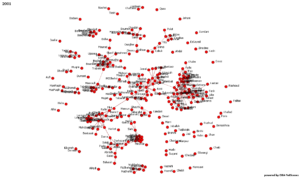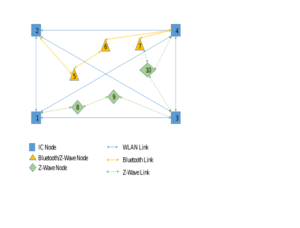Projects
-
Deep learning classifiers are known to be inherently vulnerable to manipulation by intentionally perturbed inputs, named adversarial examples. In this work, we establish that reinforcement learning techniques based on Deep Q-Networks (DQNs) are also vulnerable to adversarial input perturbations, and verify the transferability of adversarial examples across different DQN models. Furthermore, we present a novel class of attacks based on this vulnerability that enable policy manipulation and induction in the learning process of DQNs. We propose an attack mechanism that exploits the transferability of adversarial examples to implement policy induction attacks on DQNs, and demonstrate its efficacy and impact through experimental study of a game-learning scenario.
-
We present a novel computational framework for derivation of optimal destabilization strategies against dynamic social networks of terrorists. We develop a game-theoretic model to capture the distributed and complex dynamics of terrorist organizations, and introduce a technique for estimation of such dynamics from incomplete snap-shots of target networks. Furthermore, we propose a mechanism for devising the optimal sequence of actions that drive the internal dynamics of targeted organizations towards an arbitrary state of instability. The performance of this framework is evaluated on a model of the Al-Qaeda organization in 2001, verifying the efficacy of our proposals for counter-terrorism applications.
-
HEMCOT is an agile, distributed and reconfigurable testbed comprised of multiple small quadcopters equipped with onboard processors and wireless communications units. To best emulate the real-world operation and conditions, selection and configuration of quadcopters were provisioned to satisfy key criteria, including the capability to carry scenario-specific payloads such as external radios and sensors.
HEMCOT is designed and developed to provide an experimentation platform for CNL’s current and coming research on security aspects of UAV communications, instances of which are:
— Distributed coordination of evasive actions to mitigate jamming attacks
— Exploitation of antenna limitations (e.g. pattern and orientation) by smart attackers
— Topological Inference attacks and mitigation techniques
— Secure Airborne Ad Hoc Topologies
— Intrusion detection in distributed, highly mobile networks
— Defensive routing and directional communications
— Induction attacks (e.g. manipulating the environment to trigger undesired fail-safe states)
— Game-theoretic frameworks for autonomous incidence response planning in distributed airborne networks of heterogeneous nodes -
We propose a framework based on Network Formation Game for self-organization in the Internet of Things (IoT), in which heterogeneous and multi-interface nodes are modeled as self-interested agents who individually decide on establishment and severance of links to other agents. Through analysis of the static game, we formally confirm the emergence of realistic topologies from our model, and analytically establish the criteria that lead to stable multi-hop network structures.


